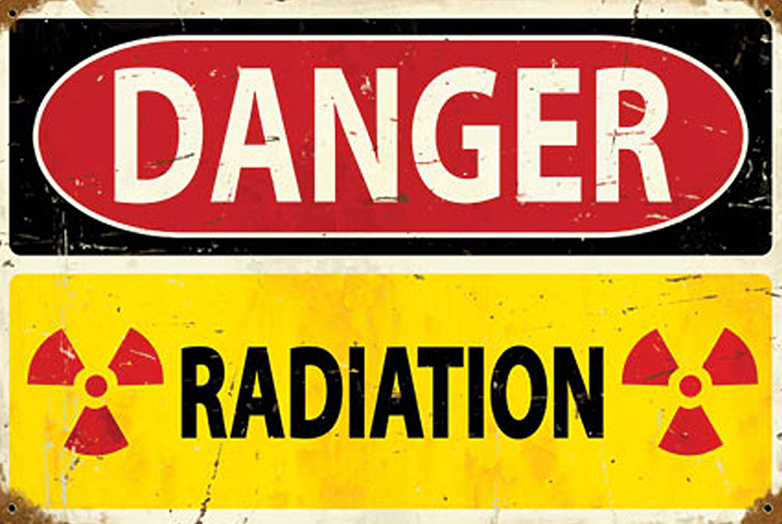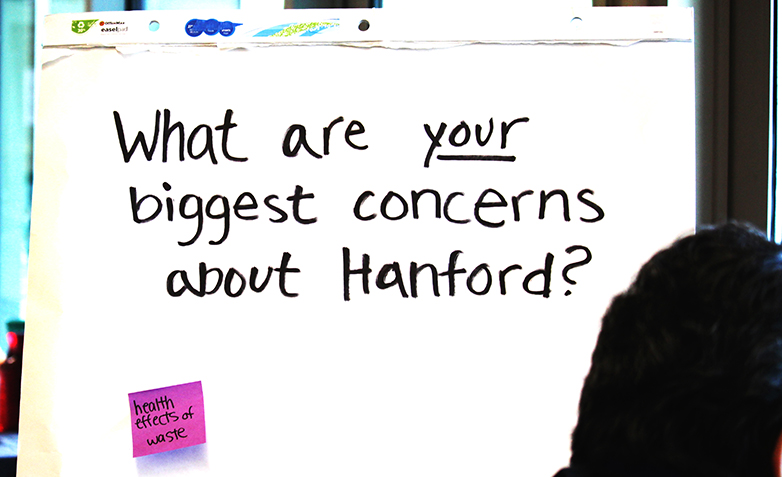Nuclear Waste Program
From 1945 until 1987, the U.S. had an insatiable need for plutonium to fuel the country's nuclear arsenal. In the quest to maintain nuclear superiority during the Cold War, the federal government emphasized production over environmental protection. Now we're overseeing cleanup of the toxic chemicals and radioactive waste left behind.
As a result of 45 years of plutonium production at Hanford, there are enormous amounts of toxic waste in Washington that we must ensure is safely contained and eliminated whenever possible. The remaining waste at Hanford includes radioactive waste and equipment; dangerous chemicals; contaminated soils; polluted groundwater; and 177 tanks holding 56 million gallons of chemical and radioactive waste.
Plutonium production at Hanford ended in 1987. Cleanup began almost immediately, and Washington state insisted that it have a meaningful part to play. The result was the Tri-Party Agreement, which spells out roles and responsibilities for the U.S. Department of Energy, EPA, and us.
The U.S. Department of Energy directs the cleanup at Hanford. We partner with the EPA to regulate the cleanup. Our mission is to ensure safe, effective cleanup that proceeds on schedule and serves to protect human health and the environment — today and into the future.
Ecology's role
Ecology formed its Nuclear Waste Program to keep people and the environment safe from the dangers of radioactive and chemically hazardous waste. Our program pursues a broad mission:
- Enforcing regulatory compliance and cleanup at Hanford and other mixed waste facilities statewide, including the Puget Sound Naval Shipyard and Framatome (formerly AREVA NP Inc.).
- Promoting public involvement to enhance waste management, compliance, and cleanup.
- Ensuring appropriate oversight to safely manage hazardous waste at the US Ecology low-level radioactive waste disposal site.
A toxic stew of threats
Environmental threats took many forms at Hanford:- Originally 80 square miles with contaminated groundwater, some seeping into the Columbia River
- Millions of tons of contaminated soil
- Hundreds of contaminated buildings
- Hundreds of dumping sites for toxic and nuclear waste
- 177 underground tanks holding toxic stews of nuclear and chemical waste
- Toxic fumes escaping from the tank waste
- Nine nuclear reactors
The regulatory framework
Two far-reaching federal laws govern the Hanford cleanup. RCRA, the Resource Conservation and Recovery Act and the Comprehensive Environmental Response, Compensation and Liability Act (CERCLA), commonly known as the Superfund law.
Each law plays a vital role in the cleanup. RCRA is the primary federal law devoted to proper disposal of hazardous and solid waste. The law seeks to protect the environment and human health, conserve energy and natural resources and cut down on the amount of waste generated. The Superfund law focuses on cleaning up hazardous waste sites as well as accidents, spills, and other emergency releases of pollutants, and contaminants into the environment.
We maintain several permits to govern cleanup operations at Hanford, but the primary permit is the Hanford dangerous waste (site-wide) permit. Or, across most of Hanford, known simply as "The Permit." The site-wide permit has been comprehensively revised several times. Currently we're operating with Revision 8C, but we are working toward release of Revision 9.
In addition, we administer individual permits for facilities that handle mixed (radioactive and hazardous chemical) waste in Washington.
To carry out our regulatory responsibilities, we employ project teams. Each team includes experts with different capabilities needed to tackle that project's unique challenges. Engineers, hydrologists, chemists, geologists, environmental scientists, and other specialists work together to ensure safe, effective cleanup at Hanford.
- Groundwater — cleaning up Hanford's contaminated groundwater and working to keep those contaminants out of the Columbia River
- Air quality — managing the Hanford Air Operating Permit to protect our air resources
- Environmental restoration — working to protect natural resources around the Hanford site
- Other mixed waste sites — providing the most economical oversight of other sites in Washington with mixed wastes
- Permits for waste management — permitting and closure of facilities that handle dangerous or mixed waste
- Tank waste monitoring and closure — ensuring safe storage of waste in Hanford's 177 tanks, and eventual closure of those tanks
- Waste Treatment Plant — overseeing safe retrieval, treatment and disposal of tank waste
Public education and involvement
We're dedicated to including you in the effort to clean up Hanford, which involves a range of activities. We hold public meetings and we ask for your comments on changes to the permits that affect Hanford. Then we consider those comments as we make the changes. We're also available to share information about the Hanford cleanup process with your group, your community, or your classroom. Request a speaker today.
Contact information
Ecology's Nuclear Waste Program
General questions:
Email us, call us at 509-372-7950, or visit us on Facebook and Twitter.
Media inquiries:
Ryan Miller
Communications Manager
ryan.miller@ecy.wa.gov
509-537-2228
Request a Speaker:
Ryan Miller
Communications Manager
Hanford@ecy.wa.gov
509-372-7935




